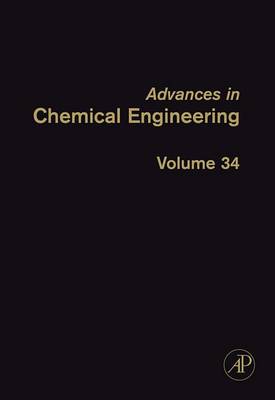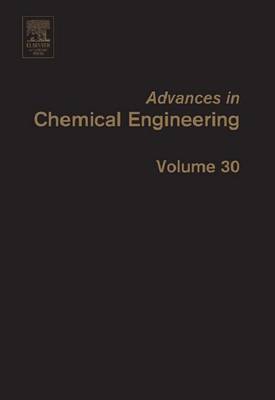Advances in Chemical Engineering
2 total works
Understanding and modeling the kinetics of chemical reactions is crucial to any research and development effort aimed at process optimization and innovation. This volume of Advances in Chemical Engineering provides four complementary points of view. It reflects state-of-the-art developments as well as views on the way to proceed by reporting on the efforts of a representative, sample of research and development groups.
A first contribution by W.H. Green Jr. sets the scene. The author advocates a paradigm shift in chemical kinetics from "postdictive" to predictive models.
The contribution from the Politecnico di Milano reports on the tremendous experience accumulated over the years in the field of steam cracking, one of the largest scale production processes of the petrochemical industry. The Russian school of chemical kinetics is represented by a chapter on oxidation of alkanes, this contribution addresses more "philosophical" issues. The last chapter gives an indication of the state-of-the-art in an industrial environment.
A first contribution by W.H. Green Jr. sets the scene. The author advocates a paradigm shift in chemical kinetics from "postdictive" to predictive models.
The contribution from the Politecnico di Milano reports on the tremendous experience accumulated over the years in the field of steam cracking, one of the largest scale production processes of the petrochemical industry. The Russian school of chemical kinetics is represented by a chapter on oxidation of alkanes, this contribution addresses more "philosophical" issues. The last chapter gives an indication of the state-of-the-art in an industrial environment.
The theme of the present volume "Multiscale Analysis" has been introduced about a decade ago and is now reaching a stage where a first balance can be made and further research directions should be decided.
Contributions have been carefully selected to ensure the reader will not be confronted with quantum mechanics at one side of the spectrum nor with chemical plants or even the environment on the other side. Maintaining a strong connection with reality i.e. experimental data was another selection criterion. Experimental validation remains the corner stone of any theoretical development and very powerful experimentel techniques are emerging.
Areas covered include discussing in depth an important example of experimental techniques. Coming from the medical world, Magnetic Resonance techniques can now provide even quantitative answers to problems our community is faced with. The modeling issue is discussed further. Finally, the limitations of the classic reactor engineering models are outlined.
Contributions have been carefully selected to ensure the reader will not be confronted with quantum mechanics at one side of the spectrum nor with chemical plants or even the environment on the other side. Maintaining a strong connection with reality i.e. experimental data was another selection criterion. Experimental validation remains the corner stone of any theoretical development and very powerful experimentel techniques are emerging.
Areas covered include discussing in depth an important example of experimental techniques. Coming from the medical world, Magnetic Resonance techniques can now provide even quantitative answers to problems our community is faced with. The modeling issue is discussed further. Finally, the limitations of the classic reactor engineering models are outlined.

